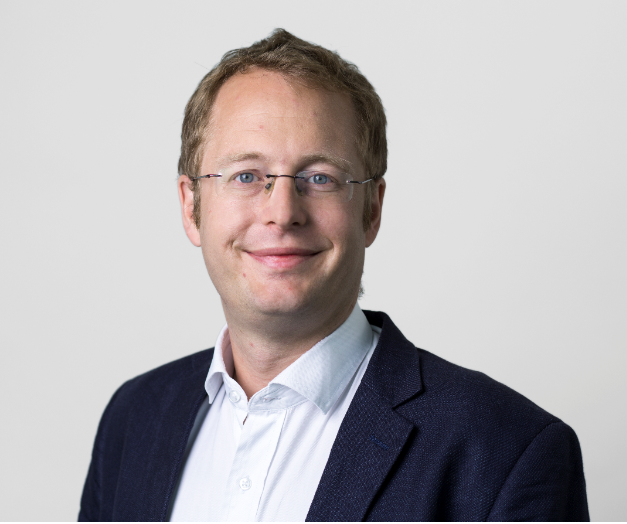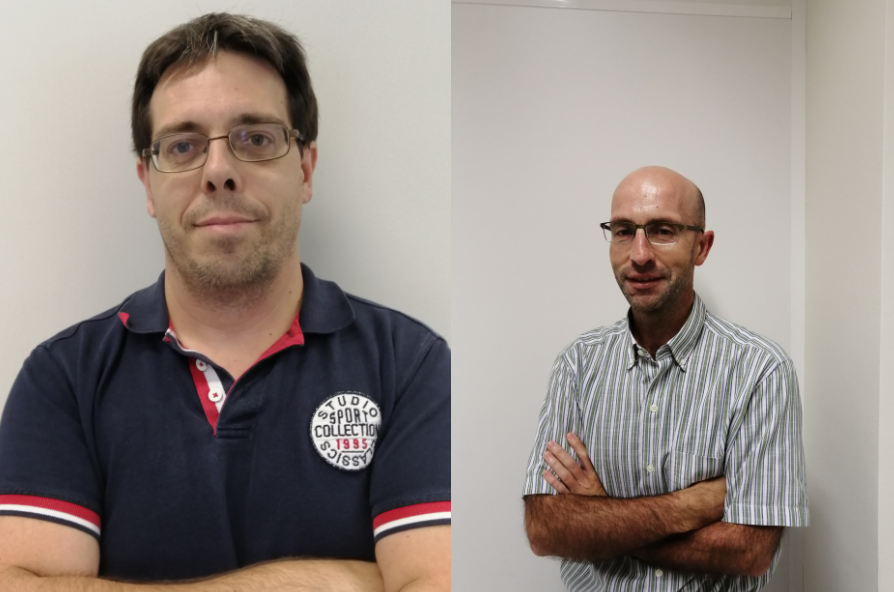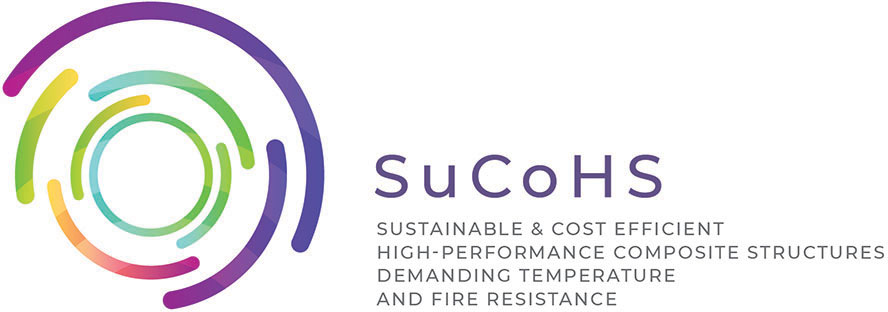Find out how the people involved in SuCoHS have been working to achieve the objectives of the project!
Interview with Christian Brauner, leader of the group "Structural Mechanics" at the University of Applied Sciences and Arts Northwestern Switzerland (FHNW)

Q1: FHNW is the leader of the WP2 “New Materials and Manufacturing Processes”. Can you briefly describe your involvement in SuCoHS?
A1: The institute of Polymer Engineering has a long track record in new formulation of resins for high temperature applications as well as for impact modification of the otherwise quite fragile thermosets based on epoxy or cyanate ester resins. In the SuCoHS project both concepts needed to be combined, means the requirement for the matrix is to have a high thermal stability and at the same time to provide significant better impact properties than the neat resin. Besides these requirements, the matrix material needs to be processible for the production of prepregs by the company North Thin Ply Technology (NTPT).
Q2: Can you explain the steps of the material developments within the project?
A2: After the selection of the base resin different approaches were taken to improve the impact properties, however soon it was obvious that only the concept to add a suitable thermoplastic material into the base resin under formation of a distinct target morphology was promising enough. As many factors are influencing the morphology of thermoset-thermoplast-blends, a thorough analysis of the reaction partners, the processing temperature and mixing was performed. By the variation of these parameters a better understanding of the complex system was reached.
Q3: What is the method used to perform the down-selection of materials? What conclusions can be drawn from the down-selection process?
A3: The choice on the base resin was quite limited as the requirements – mainly the thermal resistance properties - given from the project exclude most on the market freely available resin classes. As soon as the base resin was fixed, the testing with the thermoplastic additives was initiated and the morphological results decided on suitability of the reaction partner. As this process is very delicate, the selection was rather fast. The most important factor for a fast and successful down-selection is the availability of detailed technical specifications.
Q4: FHNW has also been involved in the development of higher resistant composites. What kind of solutions have the partners investigated so far?
A4: In SUCHS two promising material systems have been developed. In the first case applicable for high temperature application up to a maximum operation temperature of 300°C and in the second case a sustainable system for interior application which satisfies the FST requirements. By a holistic approach of material providers like Transfurans Chemicals, a prepreg provider for thin ply prepreg systems like NTPT and end users like Bombardier, Aernnova and Collins Aerospace solutions are under development which fits to the requirements & specifications to enable new cost efficient light weight solutions.
Interview with Javier Navas and Inigo Ortiz de Zarate, engineers at Aernnova Engineering, Spain.
Q1: Aernnova is one of the industrial end users in SuCoHS. Can you briefly describe your involvement in the project?
A1: Aernnova is a leading aerostructures company specialized in the design and manufacturing of aerostructures and components such as wings, empennages and fuselage sections. Our capabilities enable us to assume full responsibility of the programs over the Product Life Cycle: From conceptual and detail design, testing & certification to serial production and in service support. In relation with the Sucohs objetives, it must be highlighted AED contribution to the following commercial projects:
- Bombardier Cseries (now Airbus A220) Tailcone: Development of thermal and fire protection structure for the APU named "Dog House" within the Tailcon carbon structure.
- Sikorsky S92 Main Rotor Pylon: Selection of suitable carbon material depending on the thermal map defined in MRP areas. Definition of thermal protection shields in Engine Cowlings. Definition of fire extinguishing protection grids in the APU area of the MRP. Realization of real product 3D tests for FAA fire certification.
- Sikorsky S-92 interiors: Definition of materials configuration for validation by flammability tests,fire proof and fire resistance. Realization of fire proof and fire resistance tests as well as emission of particles.
On the Sucohs project AED will play an industrial partner role, fixing the requirements for new material development, supplying knowledge into design of composite parts with new hybrid material and detailed modelling of structure (analysis methods, material modelling, allowables), will provide a subcomponent representative of a tailcone and finally, also will contribute in the creation of the test plan lower levels of the pyramid testing: large coupons and small subcomponent).
Q2: What is the industrial use case proposed by Aernnova to demonstrate the new technologies developed in SuCoHS?
A2: the industrial case proposed by Aernnova is the fuselage composite end section commonly called tailcone. The Auxiliary Power Unit (APU) key functional requirements are to provide electrical energy and compressed air, mainly to start main engines and it is tipically located within the tail cone of current aircrafts. The Tail Cone contains systems components that need to operate under thermal and potentially fire environments originated in the APU. These components are currently encapsulated by a titanium box –type structural arrangement to prevent the surrounding tail cone structure from fire hazards and high static thermal loads up to 180°C.
Q3: What are the main requirements/constraints for this use case and what kind of improvements do you plan to achieve?
A3: The AED proposed use case is a high temperature tail cone panel substructure with a double curved part. Main goal is to avoid the need of an extra insulating titanium box by introducing high temperature composite materials for the primary fuselage structure, in order to significantly reduce weight, manufacturing costs and operational costs.
The reference fuselage structure is defined by a stringer-frame design where skin and stringers are made of CFRP and frames of metal.
The Tail Cone is not a mechanically highly loaded structure. The temperature distribution within the Tail Cone when removing the titanium box has to be investigated and analyzed. Resulting from that, temperature gradients cause mechanical strains that concur with mechanical loads. The critical requirement is defined by the max. peak temperature that is required to be below Tg of 300°C. Different fire scenarios are also an important requirement for certification not only in terms of temperature and time exposition, but also the fumes and toxicity.
Regarding manufacturing limitations, autoclave curing is required to be below 210°C temperature. Postcuring is not desirable in order to reduce costs and parts production times.
The target objectives are the following:
- 15% weight savings
- 10% cost saving
- 15% maintenance saving
Q4: Aernnova has been investigating fire behaviour of the composite materials. Why is this aspect important?
A4: Airworthiness Certification Agencies identify the Fire events as critical for the safety and survivability of airplane occupants. Therefore, aircraft development projects have to ensure potential fire hazards are properly contained so as not to affect the flight safety. The traditional Means of compliance is through the certification tests of the designated fire zones. A few well-known guidelines for metallic structures are available for fire design criteria. However this is not valid for composites due to the huge variability and complexity of materials and laminates. Thus, fire design criteria many times lay on endless and costly try&error tests up to get the valid configuration of composite material, laminate and structural designs. And that is the reason why to gain knowledge on fire simulation tools is important to Aernnova. The main objective is to develop fire simulation capabilities to support the design against fire of structural details and certification tests and hence, gain design capabilities and reduce development costs.
Q5: What technology readiness level (TRL) is the pilot demonstrator supposed to reach at the end of the project? What are the next steps towards the application of the new technologies in industry?

DISCLAIMER
The information, statements and opinions in the above interviews are personal views of the individuals involved in the SuCoHS project and do not necessarily reflect the views of the SuCoHS consortium as a whole, nor of the European Commission. None of them shall be liable for any use that may be made of the information contained herein.
